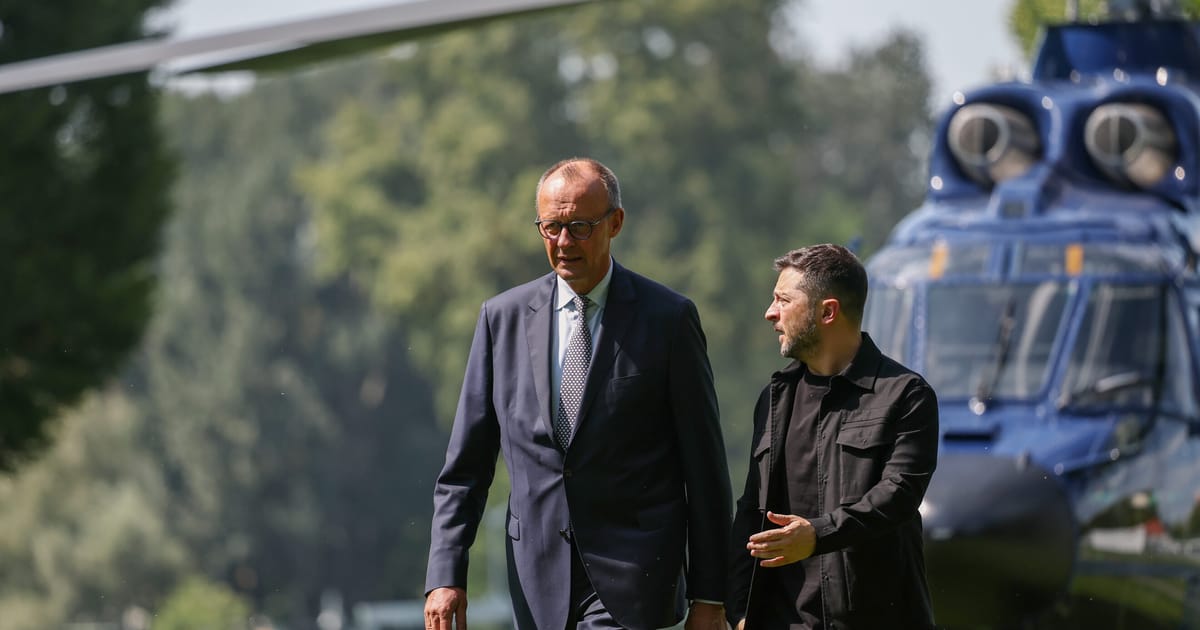One person familiar with the virtual meeting told POLITICO that “overall there was a positive atmosphere,” while also adding a note of caution about whether the virtual summit will influence Trump in the end. “Trump, as always, talked a lot about what he would do, but in a way that no one could say what exactly he was going to do.”
Zelenskyy traveled to Berlin on Wednesday to join European leaders for three rounds of virtual talks arranged by Germany’s Merz aimed at persuading Trump to defend the interests of Ukraine and Europe in advance of the president’s hotly anticipated summit with Russian President Vladimir Putin on Friday in Alaska.
Merz said European leaders presented Trump with five core stances. First, Ukraine must have a seat at the table in future negotiations. Second, peace negotiations can only take place after a ceasefire is reached. Third, Ukraine will only be prepared to negotiate on territorial issues if the so-called “contact line” is the starting point, while ruling out legal recognition of Russia’s claim on Ukrainian territory. Fourth, any deal must include robust security guarantees for Ukraine. And finally, negotiations must be part of a transatlantic strategy that includes increasing pressure on Putin if no progress is made in Alaska.
European leaders had become increasingly nervous about the Alaska meeting after Trump said Monday that a peace deal between Russia and Ukraine would require “land swapping” in which Russia would reportedly keep regions it has captured and also some territory it has not yet fully occupied.
But speaking after the virtual summit from his holiday residence in the south of France, French President Emmanuel Macron said U.S. President Donald Trump agreed with European leaders that Ukraine must be part of any discussions about territorial concessions to end the war with Russia.
Zelenskyy has rejected the idea of “land swapping” and is calling for strong U.S. sanctions against Russia.
